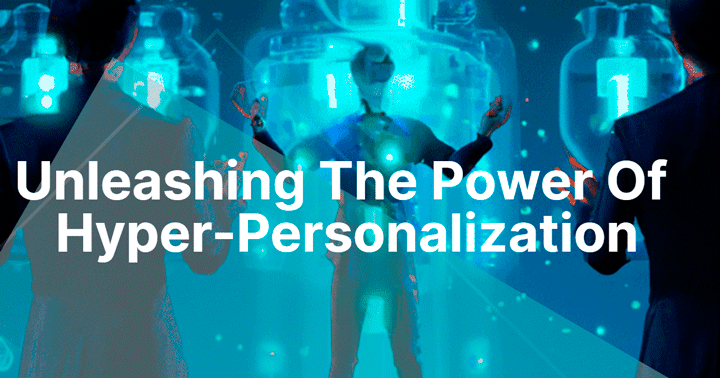
Unleashing the Power of Hyper-Personalization in Your Marketing Strategy
Personalization is no longer just a buzzword in the marketing world – it’s an essential ingredient for success. In fact, studies show that 80% of consumers are more likely to do business with a company that offers personalized experiences. But what if personalized experiences could be taken to the next level? Enter hyper-personalization. Thanks to advancements in generative AI, brands can now create individualized content that goes beyond the standard “Hi [first name]” email. In this post, we’ll explore the power of hyper-personalization, why it matters, how to implement it, and the key benefits of doing so. Get ready to unleash the full potential of your marketing strategy.
Understanding Hyper-personalization
To understand hyper-personalization, we need to first understand what personalization really means. Personalization is the process of tailoring a message or experience to an individual’s needs, preferences, and behaviors. This can be achieved through data collection, analysis, and segmentation.
Hyper-personalization takes personalization to the next level by leveraging machine learning algorithms to create highly individualized content and experiences for each customer. This means the content and messaging is not just tailored to the individual’s past behavior or interests, but also to their real-time behavior and context.
Why is hyper-personalization so important for marketers? Simply put, customers are demanding it. They want to feel valued and understood by the brands they engage with. In fact, studies show that 72% of consumers will only engage with personalized marketing messages, and 44% are more likely to become repeat buyers after a personalized shopping experience.
In addition to meeting customer expectations, hyper-personalization has a number of benefits for brands, including increased engagement, higher conversion rates, and greater customer loyalty. By providing highly targeted and relevant content, brands can build deeper relationships with their customers, ultimately leading to increased sales and revenue.
Now that we understand why hyper-personalization matters, let’s explore how to implement it effectively.
Why Hyper-personalization Matters?
In today’s digital age, customers expect more from brands than ever before. They want personalized experiences that are tailored to their interests, preferences, and behaviors. That’s why hyper-personalization has become such a crucial part of any successful marketing strategy. By using data and insights to create highly customized content and experiences, brands can build stronger connections with customers and drive meaningful business results.
Hyper-personalization matters because it allows brands to deliver the right message to the right person at the right time. By understanding individual customer needs and preferences, brands can create targeted campaigns that speak directly to each customer’s unique interests and motivations. This level of personalization can help brands stand out in a crowded market, increase engagement and loyalty, and ultimately drive sales and revenue.
Additionally, hyper-personalization can help brands create more meaningful and memorable experiences for their customers. When customers feel that a brand truly understands and cares about their needs, they are more likely to become loyal advocates, recommending the brand to friends and family and returning for repeat purchases.
Overall, hyper-personalization is a powerful tool that can help brands differentiate themselves from competitors and build strong, lasting relationships with customers. In the next section, we’ll explore how to implement hyper-personalization effectively, so that you can start reaping the benefits for your own brand.
How to Implement Hyper-personalization?
To implement hyper-personalization effectively, brands need to start with a deep understanding of their target audience. This means collecting and analyzing customer data, including demographic information, purchase history, and browsing behavior. Armed with this information, brands can create targeted messaging that speaks directly to each customer’s unique needs and preferences.
One effective way to personalize messaging is through email marketing automation. By segmenting email lists based on customer behavior and preferences, brands can send targeted and relevant messages to each customer at the right time. This can include personalized product recommendations, tailored promotions, and follow-up messages based on browsing or purchasing behavior.
Another way to implement hyper-personalization is through website and app personalization. By using data to personalize the user experience, brands can create a seamless and relevant online experience for each customer. This can include personalized product recommendations, tailored content, and customized messaging based on the customer’s past behavior.
Overall, implementing hyper-personalization requires a thoughtful and data-driven approach. By leveraging customer data to create personalized messaging and experiences, brands can build strong and lasting relationships with their customers. In the next section, we’ll explore the key benefits of hyper-personalization and how it can impact your marketing strategy.
Key Benefits of Hyper-personalization
Hyper-personalization has become a buzzword in the marketing industry in recent years, and for good reason. The benefits of hyper-personalization are numerous and significant. By delivering targeted and personalized messages, brands can deliver an enhanced customer experience, improve customer loyalty, and drive revenue growth.
First and foremost, hyper-personalization allows brands to create a more seamless and relevant customer experience. When customers feel understood and catered to, they are more likely to engage with a brand and stay loyal over time. Personalized recommendations and content can go a long way in making a customer feel like they have a personal relationship with a brand.
In addition, hyper-personalization can lead to increased revenue and sales. By delivering targeted messages and recommendations, brands can drive customer engagement and encourage repeat purchases. Data shows that personalized product recommendations can increase sales by as much as 10%, making it a powerful tool for revenue growth.
Another significant benefit of hyper-personalization is improved customer retention. When customers feel that a brand understands their needs and preferences, they are more likely to stay loyal and continue doing business with that brand. In fact, according to a study by Epsilon, customers who receive personalized communications are 80% more likely to continue doing business with a brand.
In summary, hyper-personalization can have a significant impact on a brand’s marketing strategy. By creating a more personalized and relevant customer experience, brands can improve customer loyalty, drive revenue growth, and increase customer retention. In the next section, we’ll explore some examples of hyper-personalization in action and how brands are using this strategy to drive success.

